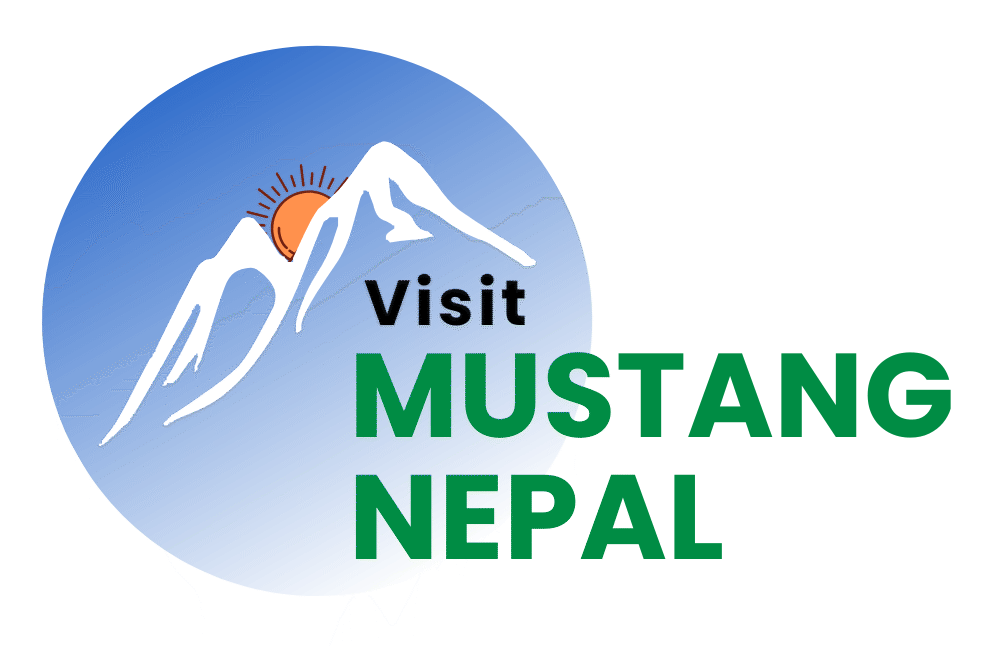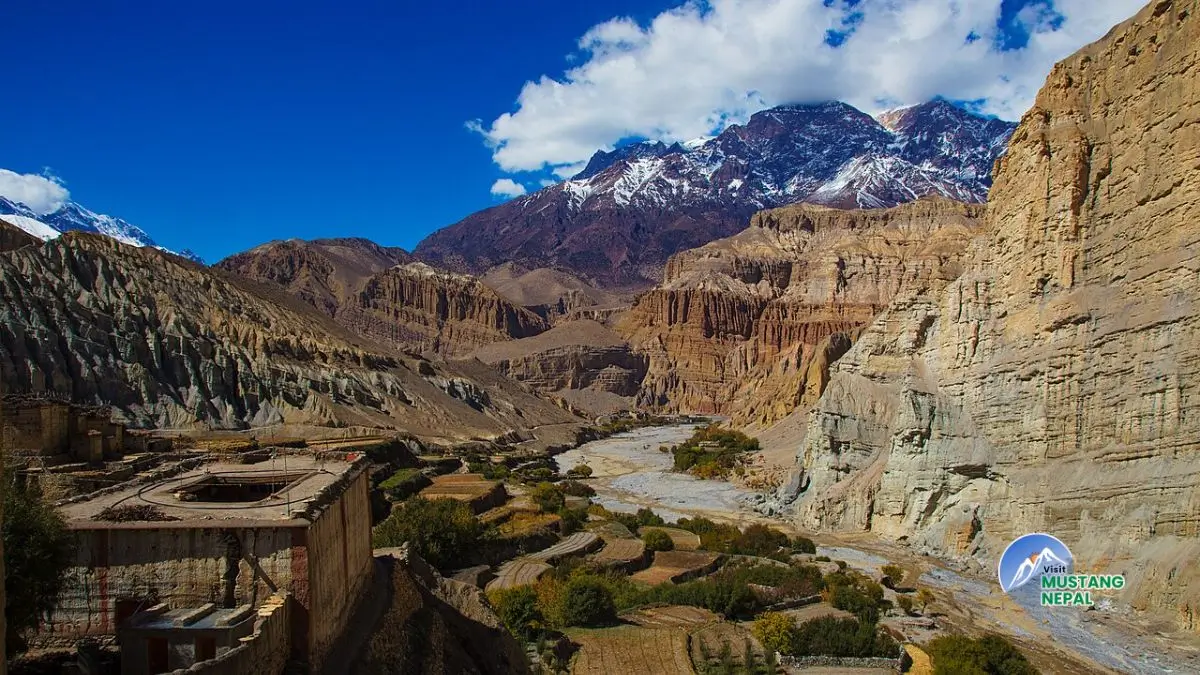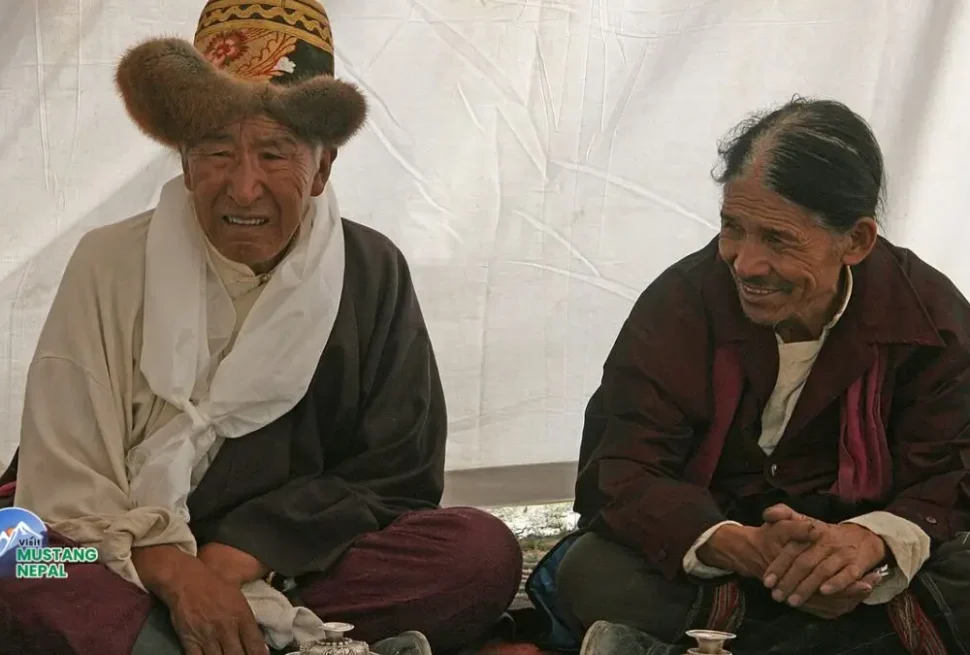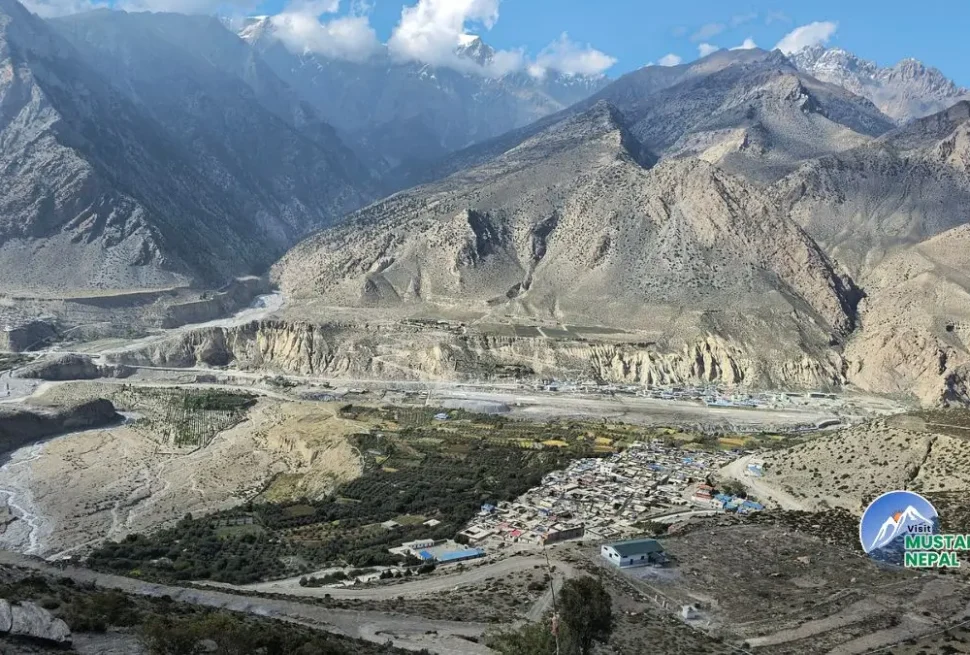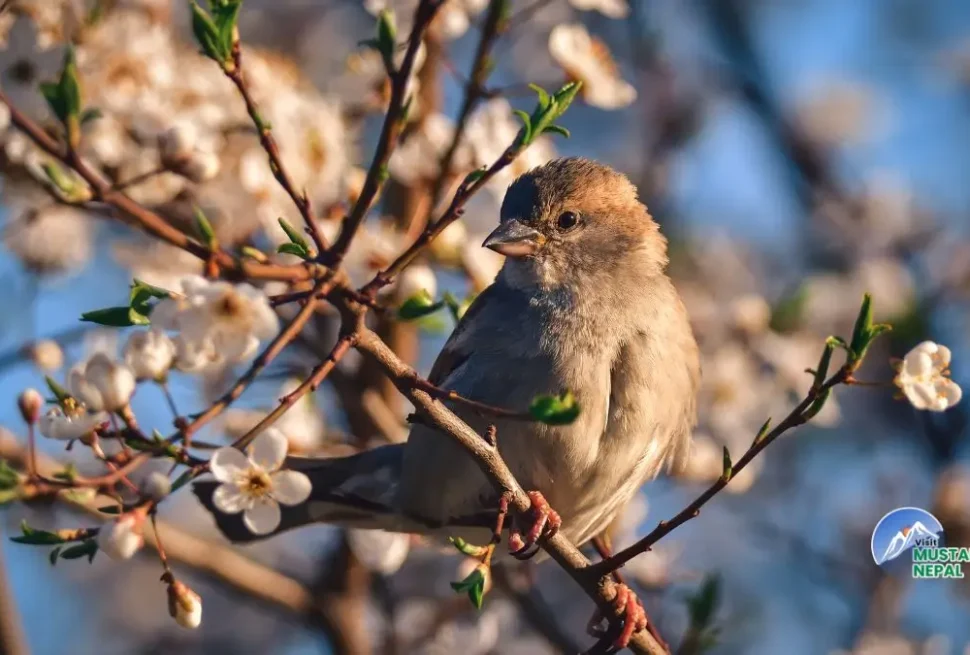Mustang’s trade with China has historically shaped the region’s economy. Mustang is a remote place high in the Himalayas in Nepal. It has a rich culture and beautiful mountains.
For a long time, people there lived by farming, raising animals like yaks and goats, and trading goods with neighbouring places like Tibet. But now, things are changing because more tourists are visiting, new roads are being built, and new job opportunities are starting.
Mustang’s economy has always been shaped by its geography. Tourism in Mustang is growing rapidly due to its unique culture and landscapes.
While farming and yak herding remain vital, the Upper Mustang economy is increasingly tied to tourism, trade with China, and cultural heritage sites like Lo Manthang and Muktinath.
Introduction to the Economy of Mustang
Mustang is in north-central Nepal near the border with Tibet, China. Its location has been important for trade for hundreds of years. The land is tough with high mountains and a cold climate. People farm crops like barley, wheat, lentils, potatoes, and famous apples from Marpha village. They also raise animals like yaks, sheep, and goats, which help them with food, clothing, and carrying goods.
Long ago, Mustang was on important trade routes connecting Tibet and Nepal. That trade slowed but is coming back as new roads open and trade with China grows. Tourism is also growing because visitors want to see the beautiful nature and the old Tibetan culture, especially in the ancient city of Lo Manthang.
Even with hard weather and difficult roads, Mustang is slowly changing. New roads and tourism create ways for people to earn money. But the people work hard to keep their culture safe while they grow.
Major Sectors of the Economy of Mustang
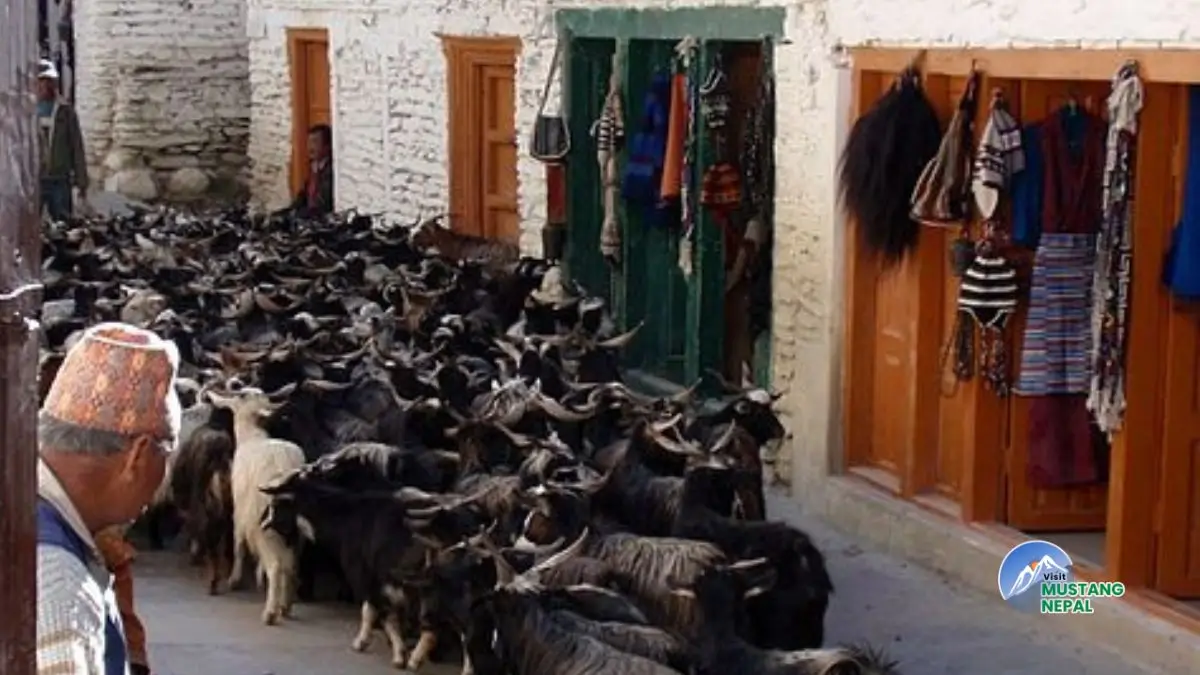
The economy of Mustang is supported by several key sectors, including agriculture, trade, tourism, and handicrafts. These sectors also support Mustang’s citizens’ livelihoods. Understanding these areas can provide insight into economy of Mustang structure and future growth potential.
Agriculture in Mustang
Agriculture in Mustang remains the backbone of the local economy of Mustang despite harsh conditions. Local farmers are incredibly resourceful, growing crops that can survive in thin air and extreme weather conditions.
The main crops include barley, wheat, lentils, potatoes, and apples. Barley is especially important because it can grow at very high altitudes where other crops might fail.
In recent years, apple farming has become increasingly popular, especially in areas like Marpha village, which is famous for its delicious apples and apple products. Marpha village products, especially apples and apple-based goods like brandy and cider, are famous throughout Nepal.
Animal Husbandry in Mustang
Animals are not just livestock in Mustang, they’re partners in survival. Yaks, those magnificent shaggy creatures perfectly adapted to high altitudes, are used for animal husbandry here. Along with yaks, people raise dzo (a yak-cow crossbreed), sheep, and goats.
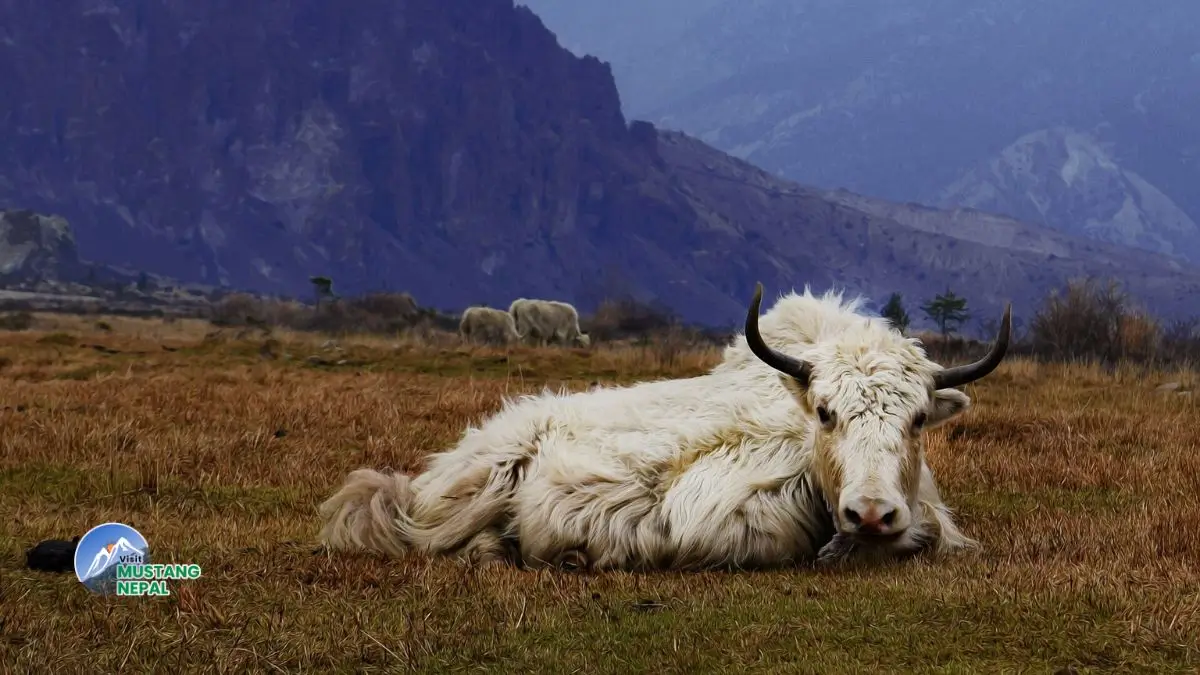
These animals provide everything families need: milk for cheese and butter, wool for warm clothing, meat for food, and even transportation. Yaks can carry heavy loads along mountain trails where vehicles can’t go, making them essential for both daily life and the tourism industry.
The animals also play a crucial role in trade, as their products like wool and cheese can be sold or exchanged with other communities.
Trade in Mustang
For centuries, Mustang has been on ancient trade routes connecting Tibet with the lowlands of Nepal and India. Traders would journey through these mountains carrying salt from Tibet’s lakes, grains from Nepal’s fertile valleys, and textiles from various regions.
Today, Mustang trade with China continues to be a vital economic link through the Kora La pass, though on a smaller scale. This cross-border Mustang trade with China strengthens economic ties and offers opportunities for future growth, though government restrictions and seasonal access still limit it
Salt, wool, and textiles are exchanged for grains, daily goods, and manufactured items. The trading tradition remains strong, with many families buying and selling goods across borders.
Tourism and Its Impact
Tourism in Mustang has become a major driver of the Upper Mustang economy. Visitors come from all over the world to see the amazing mountains and learn about the rich culture. Over 3,500 tourists visited Upper Mustang annually, generating NPR 230 million in revenue from reports by myrepublica.
There are two main types of tourists: adventurers who trek through the mountains and pilgrims who visit holy places like Muktinath Temple.
Tourism contributes significantly to the Upper Mustang economy, with Lo Manthang’s restricted area permits generating millions in government revenue annually. Guesthouses, guides, and handicraft sales benefit directly from this sector.
Upper Mustang has a special old city called Lo Manthang that is surrounded by walls. You need a special permit to visit this area, and tourists pay more because it is a unique and protected place. This helps keep the culture safe and brings money to the local people. The Lo Manthang economy benefits greatly from tourism permits and cultural heritage preservation.
Many families now run guesthouses, restaurants, and offer guiding services for tourists. These jobs did not exist before tourism became popular. But most tourists come only during spring and autumn, so the income is seasonal.
Discover the unique culture and landscapes of Mustang. Plan your visit today to support local communities.
Handicrafts and Local Products
Handicrafts of Mustang reflect centuries of Tibetan and Nepali cultural influence. Local craftspeople use age-old methods to produce beautiful wood carvings, metals, fabrics, and carpets.
Among the most well-known goods is Marpha Brandy, which is produced from local apples and is loved by both locals and tourists. Not only are Marpha apples consumed raw, but they are also processed to make Marpha brandy, cider, jam, and dried apple snacks that are sold in Kathmandu, Pokhara, and even overseas.
Additionally, the area contains rare medicinal plants, such as the fabled yarsagumba, which is grown in high-altitude meadows and fetches high prices on global markets. The yarsagumba trade in Mustang is a lucrative economic activity with this rare medicinal fungus.
These goods not only provide revenue but also contribute to the preservation of cultural heritage and traditional skills.
Emerging Industries
Hydropower in Mustang is an emerging industry contributing to economic diversification. New enterprises are progressively growing, but old activities are still important.
Opportunities for employment and clean energy are beginning to be created by hydropower projects, like those on the Thapa Khola River. Thapa Khola Hydropower (11 MW) and Mristi Khola Hydropower (42 MW) are two examples of the rising hydropower industry in Mustang that provide the area with clean electricity.
These initiatives support Mustang’s economic diversification and job creation in the community. Opportunities for economic diversification and a decrease in dependency on foreign fuels are presented by these initiatives.
However, because of the region’s remote location and challenging terrain, small-scale businesses and renewable energy projects are still in their infancy.
Don’t wait, secure your spot on our next Mustang trekking tour and experience the magic of the Himalayas!
Factors Shaping the Economy of Mustang
Several unique factors influence how Mustang’s economy works. The strong Tibetan cultural influence affects everything from trading practices to the types of crafts produced. Most families still follow agro-pastoral lifestyles, meaning they combine farming with raising animals.
The remote geography creates both challenges and opportunities. While it’s difficult to transport goods and access markets, this same remoteness makes Mustang attractive to tourists seeking authentic, unspoiled experiences.
Government policies regulate tourism in Upper Mustang. It help control visitor numbers and protect the environment while ensuring communities benefit from tourism revenue.
Cultural and Geographical Influence
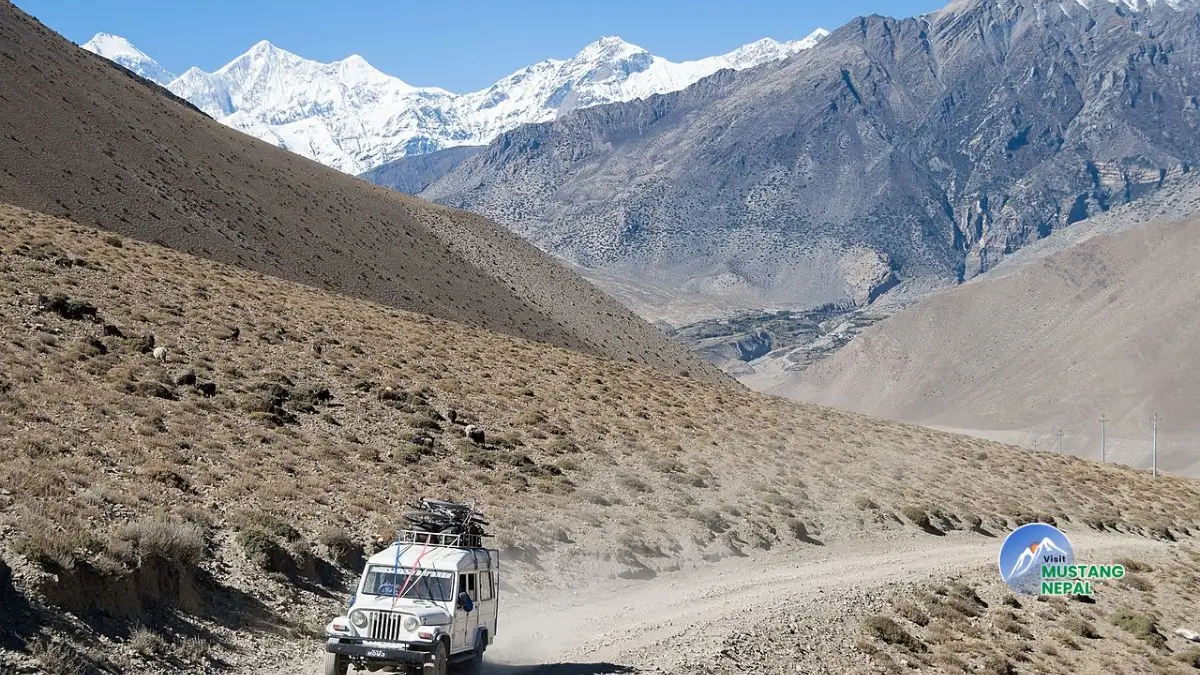
Lo Manthang, Upper Mustang’s old walled capital, serves as a hub for trade, tourism, and cultural activities. This 600-year-old city attracts people who are willing to pay high fees merely to enter the region.
Lo Manthang’s economy thrives on tourism revenue from entry permits, local homestays, and handicrafts. The ancient city is central to Upper Mustang’s economic structure.
The Muktinath pilgrimage economy is significant, with thousands of Hindu and Buddhist pilgrims. They spend on accommodation, food, transport, and offerings, boosting local businesses.The Muktinath pilgrimage economy boosts local businesses through religious tourism.
Local festivals and rituals also affect commerce. It increased demand for special foods, decorations, and services during celebration periods.
Challenges in the Economy of Mustang
- The severe, high-altitude climate restricts agricultural output and makes transportation costly and challenging.
- Roads are frequently damaged by landslides or obstructed by snow, which interferes with communication.
- Economic difficulties arise during off-season months due to a heavy reliance on seasonal tourists.
- Traditional weather patterns are changing due to climate change, which increases the unpredictability of farming and animal husbandry.
- Economic growth is hampered by limited access to markets, technology, and educational possibilities.
- Many young people migrate to cities seeking better opportunities due to local limitations.
Future Opportunities
- Growing interest in eco-tourism and cultural tourism has the potential to generate year-round income while also safeguarding the environment.
- Better branding and marketing of distinctive local items may lead to new markets.
- Sustainable trade connections and renewable energy development provide opportunities for economic growth while protecting the environment.
- Community-driven initiatives that combine old knowledge and modern techniques have the potential to generate new solutions to economic difficulties.
Final Thoughts
Mustang’s economy mixes old traditions with new ways of living. The people of Mustang are changing, but they still keep their culture alive. They grow crops, raise yaks, welcome visitors, and start using clean energy. The future of Mustang’s economy depends on protecting what makes it special while finding new ways to help the local people live better.
Ready to explore the hidden kingdom of Mustang? Contact our travel experts for a personalized itinerary.
FAQ’s
What drives the economy of Mustang?
Agriculture, animal husbandry, tourism, and trade drive the economy of Mustang. The region’s unique geography and cultural heritage is also a significant factor impactin its economic activities.
How important is tourism in Mustang’s economy?
Mustang attracts visitors with its stunning landscapes, ancient monasteries, and rich cultural traditions, which helps locals generate income and employment opportunities. That’s why tourism is important in Mustang’s economy.
What crops are grown in Mustang?
Mustang’s farmers mainly cultivate barley, buckwheat, millet, apples and potatoes, which are well-suited to the region’s high-altitude climate. These crops support local food needs and small-scale trade.
What role does animal husbandry play in Mustang?
Locals raise yaks, sheep, goats, and cattle for meat, milk, wool, and trade. It helps in agriculture and sustains many rural households that is why animal husbandry plays a vital role in Mustang.
How does trade with China impact Mustang’s economy?
Trade with China facilitates the exchange of goods such as salt, wool, and handicrafts, boosting Mustang’s economy. It also provides access to broader markets and essential supplies.
What are the main handicrafts of Mustang?
Woven textiles, carpets, metalwork, and wood carvings are the main handicrafts of Mustang. These crafts preserve cultural heritage and contribute to local income through sales to tourists and traders.
How do pilgrimage sites affect Mustang’s economy?
Sites for pilgrimages draw religious tourists and devotees, bringing in money for nearby companies and bolstering the hospitality industry. The economy is supported by this migration, particularly in rural areas.
What are the challenges facing Mustang’s economy?
The severe weather, inadequate infrastructure, and reliance on seasonal tourists are some of Mustang’s problems. Economic growth is also hampered by restrictions on market access and outmigration.
How is hydropower contributing to Mustang’s economy?
Hydropower projects in Mustang provide renewable energy, reduce reliance on imported fuels, and create jobs.
What future opportunities exist for Mustang’s economy?
Cross-border trade, developing renewable energy, agricultural production, and promoting sustainable tourism are the future opportunities for Mustang’s economy.
